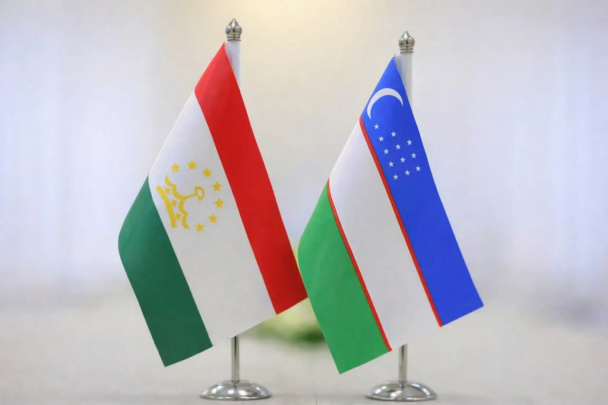Uzbekistan plans to explore the cosmos with assistance of China

Uzbekistan set an ambitious goal for the coming years - not only to develop space technologies, but also to become one of the notable players at the regional level. In February 2018, a special working commission was established in the country responsible for preparing proposals for development of space research and technology.
Development of sound concepts for improving this industry and attracting leading international experience are among its tasks. Therefore, it is no coincidence that China was chosen as one of the strategic partners in this direction, its recent successes with the space program on the Moon spread all over the world.
Today, even in the age of development of modern technologies and communications that have penetrated all spheres of our life, it can be difficult to explain to an ordinary person why the state should spend millions of dollars on space research, and not, for example, roads near his house or equipment of a district hospital.
Nevertheless, space technology has long been firmly established in our life. Satellite television, development of smart cities, weather forecasting, mobile communications, e-government, navigation systems are actively developing around the world and stimulate interest in high technologies that can improve the lives of ordinary people.
Uzbekistan, in order not to be left on the sidelines of global development processes, is striving to master innovative solutions. First of all, our country is interested in mobile telecommunications industry, global positioning satellite systems and transport monitoring, geo-location, radio navigation and many other areas that could not develop without space technology.
Leadership in this area belongs to three countries – the United States, Russia and China. At the same time, the experience of the Celestial Empire is most preferable for Uzbekistan, which in a short time was able to reach the leading roles in global space race, creating its industry almost from scratch.
It is difficult to imagine, but China became one of the leaders in the space industry in just 15 years. Thus, the first Chinese manned spacecraft “Shenzhou-5” was launched in 2003, which allowed the Celestial Empire to become the third country in the world after the USSR and the United States, which managed to independently send an astronaut into orbit.
It is very important that initially the PRC space program was created, including as a commercial project, bringing not only dividends as an innovative and technological advance, but also quite tangible financial profits.
So, in 2004, China entered into an agreement with Nigeria to create and launch the satellite NigComSat, which was successfully launched into orbit in 2007. Later, in 2011, he was replaced by NigComSat-1R.
As a result, Nigeria entered the top three African countries with their own satellites. To date, it has five such devices.
In 2005, the Celestial Empire made another step into outer space by launching the spacecraft “Shenzhou-6” with two astronauts on board. The crew spent five days in orbit around the Earth, carrying out a series of planned scientific experiments.
In June 2007, the Chinese took another record – they carried out the hundredth successful launch of the rocket line “Long March”, as a result of which the SinoSat-3 telecommunications satellite was launched. Not stopping there, they launched their first automatic interplanetary station Chang'e-1 to the Moon in the same year. Thus, China became the fifth state to send a cosmic probe to the moon.
In November of the same year, the Chinese authorities published the first photograph taken by the station, and a year later they announced the creation of a detailed map of the lunar surface.
In 2011, the People's Republic of China sent the module Tiangong-1 into space, which was produced to test the latest technologies that allow the creation of a constantly operating orbital laboratory. Thus, the Chinese announced to the world about their ambitious plans to send an astronaut to the Moon by 2025, as well as a mission to Mars.
Another important step of the Chinese space program was the launch of its own Beidou navigation system. In commercial operation, it was introduced in 2012, and at full capacity, according to experts, will be released around 2020. At the end of last year, China made a successful launch of the Changzheng-3B launch vehicle with two Beidou navigation satellites, which became the 39th and 40th in this global navigation system.
For Uzbekistan, which has limited resources, another fact may be interesting: China spends almost seven times less than the United States on its space program, but has already caught up with Americans in the number of satellite launches.
Success of the Chinese space industry has not remained unnoticed, including among domestic developers and scientists. Therefore, it is no coincidence that during the Uzbek President’s visit to China in May 2017, Shavkat Mirziyoyev visited the China Aerospace scientific-industrial corporation in Beijing. Then the countries achieved a serious breakthrough and signed several important documents on cooperation in the economy.
The first step in this direction has already been made. Tashkent University of Information Technologies (TUIT) is developing cooperation with the Chinese university Beihang, which is among the top 500 best universities in the world.
As a dean of the faculty of radio and mobile communication at the TUIT Dilmurod Davronbekov notes, today the university is a base in the field of training for the IT industry in Uzbekistan. It is tasked with expanding and developing international cooperation in exploration and development of space technology.
“We had a number of fruitful meetings with foreign colleagues. At the end of December last year, we signed a cooperation agreement with Beihang University. The document provides for the exchange of experience in the space sector. In particular, possibility of studying the Chinese navigation system Beidou, which is already a serious competitor of American GPS and the Russian GLONASS,” Davronbekov said.
According to him, while Beidou serves a limited area, but within two years, Chinese experts intend to bring it to the status of a global navigation system.
“The use of all three systems in the complex gives the accuracy of determining coordinates up to a meter. The cooperation agreement with the Chinese university envisages training of masters in space technologies, as well as training of doctoral students. It is planned to modernize the TUIT laboratory base in accordance with modern technologies,” he stressed.
At the same time, Uzbekistan is not a newcomer to space research. In 1979, under the leadership of the Uzbek scientist Shavkat Vakhidov, the Tashkent Engineering Design Bureau was created, later renamed the scientific education department “Koinot”. Its designers have created a unique drilling rig for the lunar rover “Luna-24”.
With its help, it was possible to drill a well 2,5 meters deep on the moon maintaining the structure and sequence of layers, deliver a precious load to Earth using a special module. Successful experiments with drilling, soil extraction, including transportation to the Earth with the help of the created installation were continued at the stations “Venera-13” and “Venera-14”.
Director of the Radio Astronomy Observatory RT-70 on the Suffa plateau Gennady Shanin said that in Soviet Union times, the range “Nevich” was built with the necessary infrastructure for production and testing of space technology. For example, here the specialists built a hull to simulate the conditions of weightlessness, equipped with a complex de-suspension system. However, in the years of independence, many developments in the aerospace sphere were lost.
“For 25 years, no work has been done in this area, so we do not use our aerospace zone. Now strategic plans are being developed in this area. One of the major steps will be launching our own artificial satellites. This will positively affect development of many areas of life, including television and the Intern et,” Minister of Innovative Development of Uzbekistan Ibrokhim Abdurakhmanov said.
According to him, among the main tasks for our country in this direction is the creation of research institutes that will be engaged in aerospace research.
According to an expert of the Council of the International non-governmental non-profit organization Buyuk kelagak, general director of CosTech Engineering GmbH (Munich, Germany) and the former leading specialist of the German Aviation and Cosmonautics Center Yunir Gataullin, Uzbekistan does not need to build a space launch center and launch rockets.
The expert believes that there are more effective areas of space technology. Considering the geographical and economic features of Uzbekistan, this includes remote sensing of the Earth (RSE) and geo-information systems (GIS), satellite communications, space navigation and research, education in the field of space technology.
For example, the RSE and GIS provide relatively fast and effective economic returns in such real sectors of the economy as agriculture, transport, construction, meteorology, water management and safety.
In addition, the use of sensing will play a big role in creating products with high added value and will allow solving the pressing problems of many industries. Its final product is accurate maps, mineral exploration, classification of vegetation, pastures, water bodies, road pavement assessment, meteorological forecasts, monitoring of emergency situations (mudflows, landslides, fires, floods), observation of objects of strategic importance (dams, reserves, airports, military units).
The technological basis for all this is the RSE satellite that receives multichannel satellite images from foreign satellites, data processing center that produces complex multi-level processing for planning agricultural, construction, transport, geological and geophysical, as well as environmental activities.
Yunir Gataullin notes that such satellites have long been operating in orbits and are actively used abroad. Their services can be used for a small cost (from $20 per square kilometer of space imagery). To quickly obtain these data, it is necessary to acquire and install a ground receiving station and establish the work of the data processing center.
According to the expert, creation and launch of its own satellite, taking into account the economic, technological and personnel realities of Uzbekistan in the coming years are not justified. But the reception and processing of data received from satellites of other countries, with bringing to the final product on its own, will allow deploying full-scale activities in a short time, getting valuable results and recouping the investment over several years.
Gataullin believes that space research in Uzbekistan should be developed purposefully, according to long-term scientific programs and in cooperation with foreign partners who have more experience and can take the lead.
At the same time, Uzbekistan has its own basis for conducting space research in the framework of the Astronomical Institute at the Academy of Sciences. Now these studies are mainly based on observational data from the Maidanak Observatory. The Observatory is unique in its high-quality atmospheric conditions and geographical location - it is located 120 km from Samarkand on the western spurs of the Pamir-Alay mountain system at an altitude of 2700 meters above sea level.
In 2018, on the initiative of Shavkat Mirziyoyev and Vladimir Putin, an agreement was signed to complete the construction of a unique radio astronomy observatory RT-70 on the Suffa plateau. In June, the leadership of the Russian Academy of Sciences visited Uzbekistan and the visit was mainly devoted to the creation of the RT-70 radio telescope.
President of Uzbekistan Shavkat Mirziyoyev also believes that in the near future a citizen of Uzbekistan will fly on a Russian spacecraft. Perhaps, this will be a Chinese apparatus. Nevertheless, one thing is clear - our republic seriously intends to gain a foothold in outer space and has the best partners for it.
Related News

16:25
Uzbekistan’s gas exports top $624m in 11 months as imports approach $1.5bn

12:17
Uzbekistan and Tajikistan plan to boost cargo flows and border infrastructure

18:33 / 24.12.2025
Foreign nationals burn Uzbek currency in viral video

18:26 / 17.12.2025



